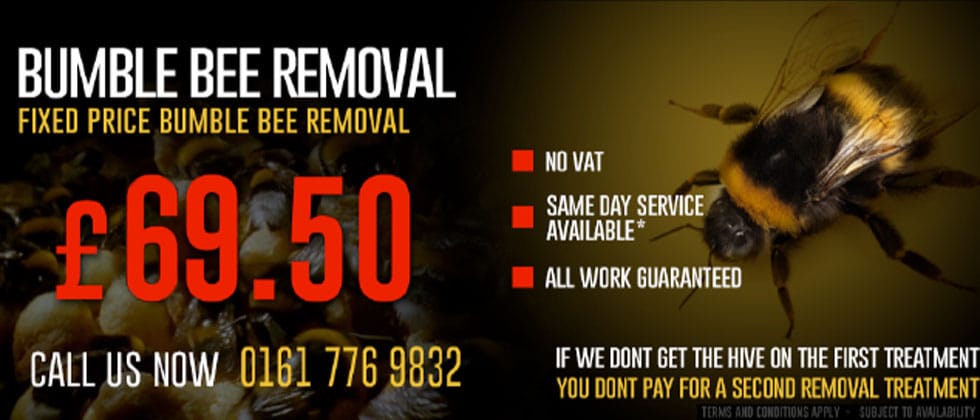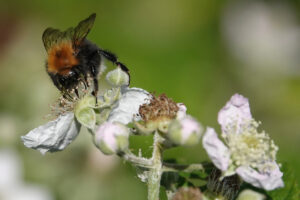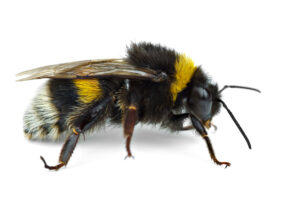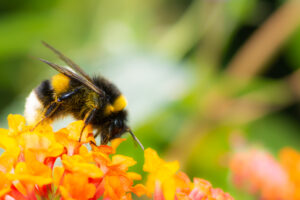

Need Help? Call Us On 0161 776 9832 For Expert Pest Control Advice On How To Identify Pest Infestations And Help Solve Your Pest Problem.
Blackrod Bumblebee Nest Removal
As far as removing insects, few are as troublesome as Bumblebees. These furry flying creatures can often be found living in colonies in abandoned rodent nests or other dark voids. What's more, they are also known to sting more than once! That's why it's important to call a professional Bumblebee exterminator if you notice a hive near your home because people with allergies may go into anaphylactic shock and, if not treated, could result in death.
found living in colonies in abandoned rodent nests or other dark voids. What's more, they are also known to sting more than once! That's why it's important to call a professional Bumblebee exterminator if you notice a hive near your home because people with allergies may go into anaphylactic shock and, if not treated, could result in death.
Bumblebees generally nest in cavities, lofts, below floorboards, in cavity walls and roof spaces, and other hidden areas and can give you a severe stinging if you're not careful. Professional remedies are essential in keeping your home safe, as DIY treatments often don't work. But, with over 25 species, how can you know which one you are treating for?
Bumblebees are complex creatures; understanding them is vital to avoid stings while waiting for a Blackrod Bumblebee hive removal specialist to get there to get rid of Bumblebees! To understand them better, let's look at a few examples of species found around the UK.
The bilberry bumblebee (Bombus monticola) is a species of bumblebee that is endemic to the United Kingdom. It is found in northern England and southern Scotland. The bilberry bumblebee is a dark-coloured bee with a black thorax and a band of light hair on the base of its abdomen. It is a generalist bee and is found in various habitats, including meadows, gardens, and hedgerows. The bilberry bumblebee is a cavity nester and typically nests in old mouse burrows, bird boxes, or abandoned beehives. It is an essential pollinator of bilberries and other early-flowering plants.
bee with a black thorax and a band of light hair on the base of its abdomen. It is a generalist bee and is found in various habitats, including meadows, gardens, and hedgerows. The bilberry bumblebee is a cavity nester and typically nests in old mouse burrows, bird boxes, or abandoned beehives. It is an essential pollinator of bilberries and other early-flowering plants.
The great yellow bumblebee (Bombus distinguendus) is a bumblebee species found in the United Kingdom and Ireland. It is a large, yellow bumblebee with a black band on the tail. The great yellow bumblebee is a generalist bee and is found in various habitats, including meadows, gardens, and hedgerows. The great yellow bumblebee is a cavity nester and typically nests in old mouse burrows, bird boxes, or abandoned beehives.
The tree bee (Bombus hypnorum) is a species of bumblebee that is widespread in Europe and Asia. A social bee lives in colonies of up to 700 bees. The tree bee is the most common bumblebee in Europe, and it is known for its aerial nest-building habits.
Tree bees live in trees. Their long noses allow them to drink from flowers while they're black and yellow. These pollinators contribute to the well-being of plants. They play an important role in the ecosystem. In trees with hollowed out trunks and multiple tunnels in the trunk, tree bees nest in natural cavities.
Blackrod Bumblebee nest removal service is the best option to get rid of bumblebees. You should never use DIY products to get rid of these pests because they are incredibly dangerous. You risk harming yourself or  your family members with homemade concoctions that may contain harmful chemicals without being labelled as such. If you have bumblebees in your home, contact a Bumblebee exterminator today so we can come out quickly and safely remove them from your property! We offer affordable rates on our services, so don't hesitate to call us at 0161 776 9832. Don't wait until it's too late - take care of this problem now before someone gets hurt!
your family members with homemade concoctions that may contain harmful chemicals without being labelled as such. If you have bumblebees in your home, contact a Bumblebee exterminator today so we can come out quickly and safely remove them from your property! We offer affordable rates on our services, so don't hesitate to call us at 0161 776 9832. Don't wait until it's too late - take care of this problem now before someone gets hurt!
